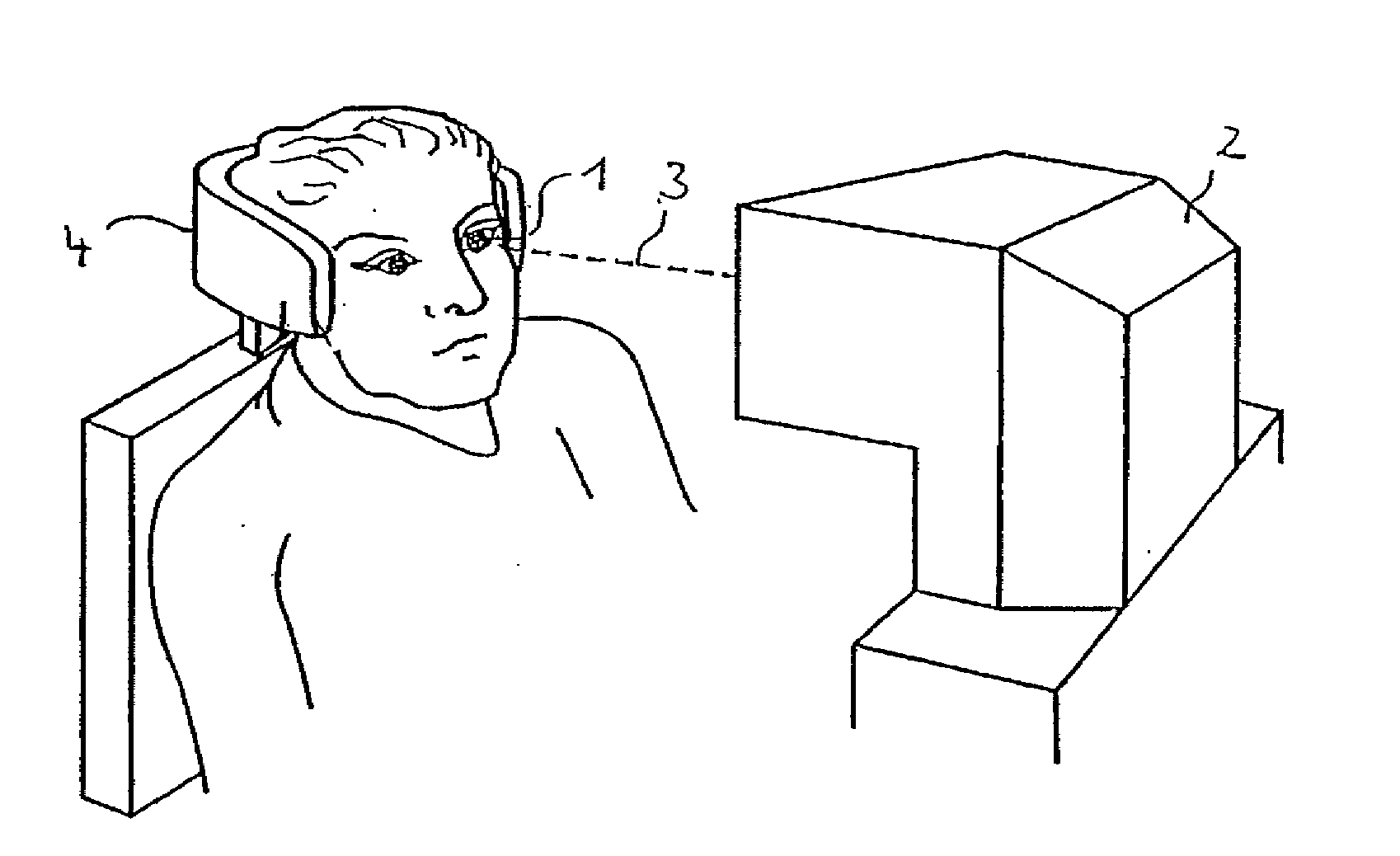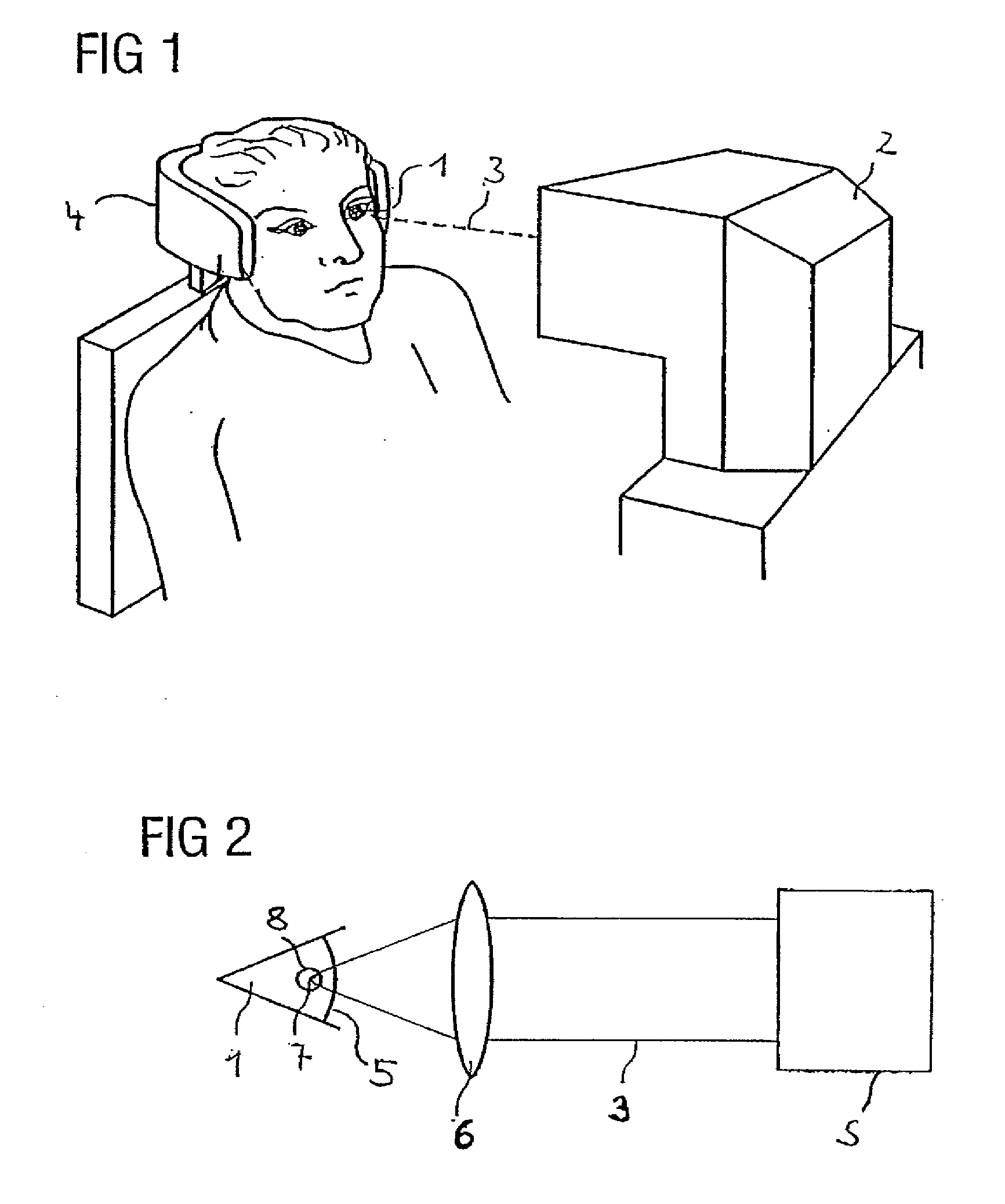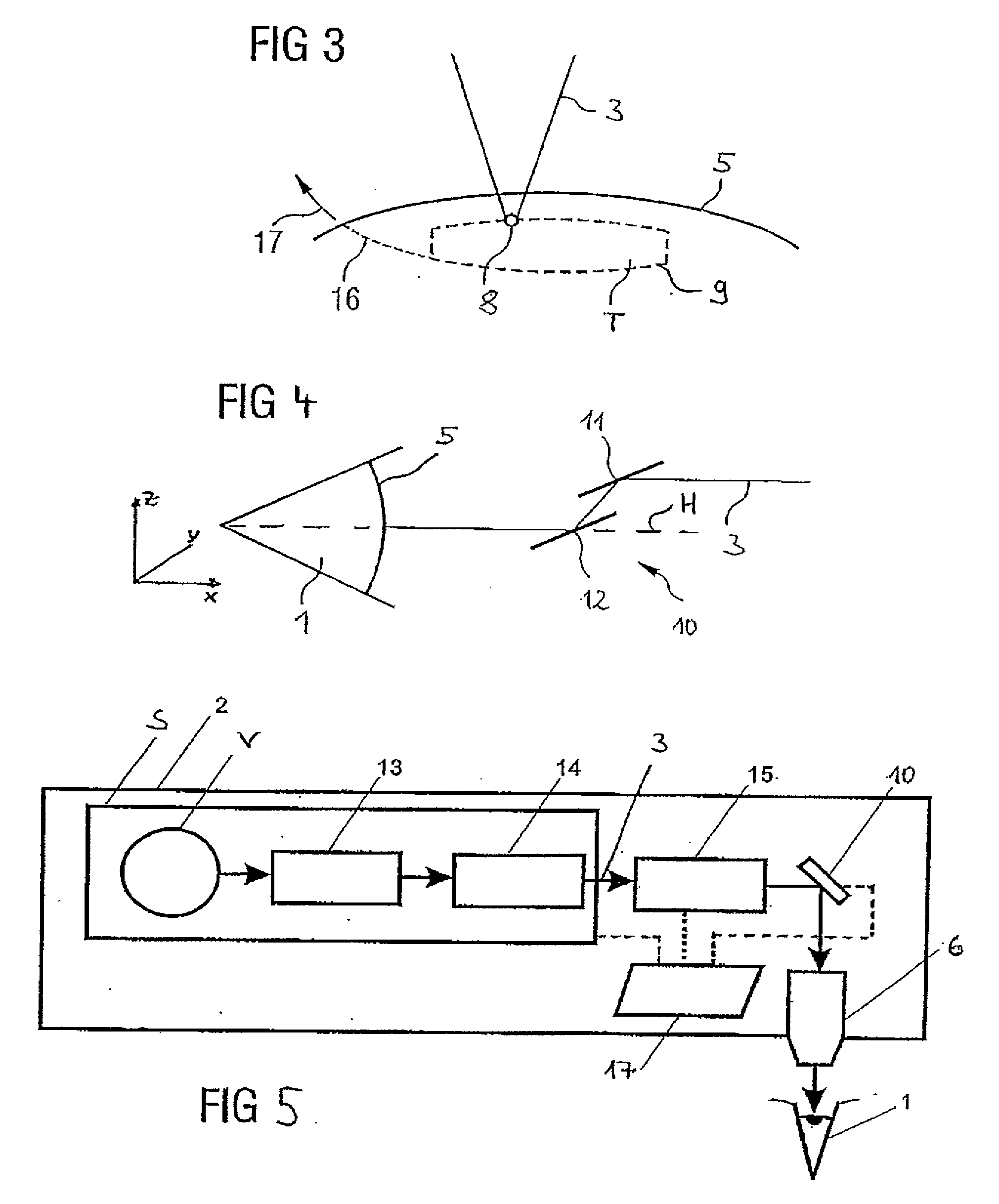Device and method for material processing by means of laser radiation
a laser radiation and material technology, applied in the direction of laser beam welding apparatus, manufacturing tools, surgery, etc., can solve the problems of reducing affecting the quality of the cut, and the cut would be incomplete, so as to facilitate the recognition of the cut surface, reduce the distance of the center of interaction, and increase the speed of the scanning uni
- Summary
- Abstract
- Description
- Claims
- Application Information
AI Technical Summary
Benefits of technology
Problems solved by technology
Method used
Image
Examples
Embodiment Construction
[0051]FIG. 1 shows a laser surgical instrument for treatment of a patient's eye 1, said laser surgical instrument 2 serving to effect a refractive correction. For this purpose, the instrument 2 emits a treatment laser beam 3 onto the eye of the patient 1 whose head is fixed in a head holder 4. The laser surgical instrument 2 is capable of generating a pulsed laser beam 3 such that the method described in U.S. Pat. No. 5,984,916 can be carried out. For example, the treatment laser beam 3 consists of fs-laser pulses having a pulse repetition rate of between 10 and 500 kHz. In the exemplary embodiment, the structural components of the instrument 2 are controlled by an integrated control unit.
[0052]As schematically shown in FIG. 2, the laser surgical instrument 2 comprises a source of radiation S whose radiation is focused into the cornea 5 of the eye 1. Using the laser surgical instrument 2 a visual deficiency of the patient's eye 1 is corrected by removing material from the cornea 5 s...
PUM
| Property | Measurement | Unit |
|---|---|---|
| time | aaaaa | aaaaa |
| spatial distance | aaaaa | aaaaa |
| distance | aaaaa | aaaaa |
Abstract
Description
Claims
Application Information
 Login to View More
Login to View More - R&D
- Intellectual Property
- Life Sciences
- Materials
- Tech Scout
- Unparalleled Data Quality
- Higher Quality Content
- 60% Fewer Hallucinations
Browse by: Latest US Patents, China's latest patents, Technical Efficacy Thesaurus, Application Domain, Technology Topic, Popular Technical Reports.
© 2025 PatSnap. All rights reserved.Legal|Privacy policy|Modern Slavery Act Transparency Statement|Sitemap|About US| Contact US: help@patsnap.com



